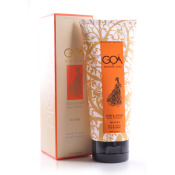
If you could unzip your birthday suit and step outside of it, your skin would weigh in at a whopping 8 lbs. and cover 22 square feet. So it’s no wonder that skin—the largest organ in the body—requires a lot of TLC to keep it in tip-top shape. And one of the most important components of healthy skin is hydration.
But hydration brings up some common questions: Can you use body cream on your face? When is the best time to moisturize? Is there a difference to all those creams and lotions? We spoke with Rodrigo Diaz, founder and creative director of GOA Skincare (he also holds a degree in biochemistry) to get the scoop on all things moisturizer-related.
Why Different Body Parts Need Different Moisturizers
The outermost layer of skin, known as the epidermis, is responsible for trapping moisture in the body and simultaneously keeping damaging substances out. “You need to create a moisture barrier and make sure the skin cells are constantly hydrated,” says Diaz. “Proper moisturizing can greatly reduce redness, cracked, or flaky skin, especially in people who are prone to such issues, such as those who live in cold and dry environments.”
Diaz explained that our bodies have evolved over thousands of years to take on environmental stressors in our surroundings. Thus, we’ve developed thicker tissue on the palms of our hands, the bottoms of our feet, and around our elbows and knees because, simply put, we use them more. In fact, those areas are up to 10 times thicker than, say, the delicate tissue around your eyes.
As such, moisturizers are formulated with a specific body part in mind. Some are created to pass through tougher areas and target dryness or premature aging. Alternatively, moisturizers intended for the face only have to pass through a much thinner layer. According to Diaz, you could use a product for parts of the body its not intended for (without any adverse effects), but you'd be wasting your money since the product wouldn't work as well. So it’s best to just stick to face cream for the face, body lotion for the body, and so on.** **
Your Daily Moisturizing Routine
Diaz was quick to point out that every person has different moisturizing needs depending on their skin type, pigmentation, and the climate in which they live. He recommends learning about your specific type before using any moisturizers or cleansers, so you can pick a product tailored to your needs.
But there are a few basic guidelines we all can follow. Moisturizing right after a shower is always a good idea. Diaz recommends using a detox cleanser (like this one) to eliminate dead skin cells and wipe away excess oils, and also suggests regularly exfoliating with a loofah or body scrub, especially on tougher areas of the skin: elbows, knees, hands, and feet.
After showering, gently pat yourself dry with a towel. For the face, use a facial lotion every day with an SPF of around 15. But, Diaz cautions against using it as a free pass to spend all day in the sun. “You should wear a hat or sit under an umbrella instead of directly exposing your face to the sun,” he explained. On the body, use a lotion and a thicker cream for the tougher areas—if you’re going to be outside, put SPF on the body, too.
Again, it depends on your skin type, but Diaz says he moisturizes twice per day. At night, you can use a moisturizer without SPF. Depending on your age, Diaz offered additional hydrating guidelines for the face.

In your teens:
Establish a healthy skincare regimen now. Even if your skin errs on the oily or acne-prone side, you still need to moisturize. Diaz recommends a non-comedogenic, non-oily moisturizer.
Our pick: Aveeno Positively Radiant Daily Moisturizer with SPF 15
In your 20s or 30s:
“In this stage, your skin is more impacted by what you do during the day than what you use as a moisturizer,” explained Diaz. A poor diet, alcohol and tobacco use, and overexposure to the sun can all have negative effects. You might think you’re too young to start using a preventative anti-aging cream, but Diaz disagrees. However, Diaz thinks it’s best to steer clear of retinol—a Vitamin-A derivative that’s common in some anti-aging creams, especially in your 20s. “Its strength might damage younger skin,” he says.
Our pick: Clinique Repairwear Intensive Night Cream
If you’re age 40 or older:
Diaz recommends using more intensive anti-aging serums and lotions. He’s into using 100% natural products loaded with vitamins A and C, as well as fresh produce like cucumbers, which he says can help reduce larger or finer lines on the skin.
Our pick: Juice Beauty Green Apple Age Defy Serum
Top Photo Credit: Gilaxia / Vetta
Featured Products
You Might Also Like
-
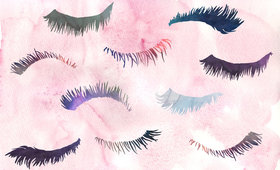
Stories
Attention pale eyelash-owners! Did you know you can get them tinted?
- 456
-

Skincare
What Are Those Bumps on Your Arms?
- 354
-
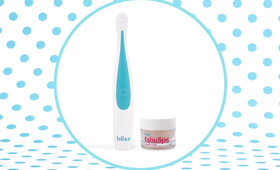
Lip Scrubs
The Bliss Fabulips ‘Pout’-O-Matic!
- 297
-
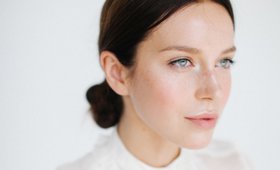
Face Skincare
5 Steps for Dewy, Healthy-Looking Skin
- 282
-
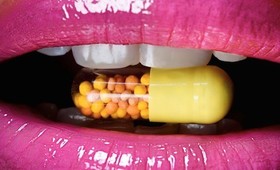
Skincare
Which Vitamins Should You Take?
- 630
-
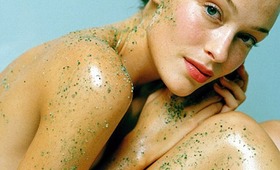
Masks
Time to Exfoliate!
- 77






